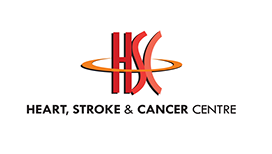Dr. Michael Lim's Articles

Understanding heart attacks
New studies show that one can get a heart attack without a blockage in the heart arteries. By Michael Lim
IN the last 10 years, new knowledge of the mechanisms of a heart attack have broadened the understanding of what is defined as a heart attack and what causes a heart attack. The Third Universal Definition of myocardial infarction (heart attack) was released this year and representatives from the major cardiology organisations of the world participated in the event.
I had the privilege of participating in the Second Universal Definition of Myocardial Infarction, which was released in 2007. In the latest Universal definition, myocardial infarctions are divided into five categories.
The commonly held belief is that if you have multiple risk factors for heart disease – such as smoking, high cholesterol, diabetes, high blood pressure or a family history of heart disease – you are likely to get a gradual narrowing of the heart arteries resulting from a build-up of cholesterol deposits (plaque) in the walls of the heart arteries, a condition also termed as coronary artery disease (CAD).
This narrowing may become so severe that the turbulent flow across the narrowed segment may result in a tear in the lining of the wall (plaque rupture), exposing the plaque contents to the blood, thereby triggering the formation of a blood clot. The occlusion of blood flow to the heart muscle results in a heart attack.
This conventional model of a heart attack is encompassed within the first category of heart attack (Type 1 myocardial infarction) in the latest Universal Definition.
It includes spontaneous heart attacks which result from the sudden blockage of the heart arteries following plaque rupture and blood clot formation.
Although severe blockage of the heart arteries is present in the large majority of these heart attacks, some studies have shown that there was no evidence of obstructive disease in the heart arteries of up to 20 per cent of patients studied, especially in women.
We now know that heart attacks can occur in the absence of plaque rupture and blood clot formation. Hence, heart attacks can occur even in the absence of risk factors for heart disease, such as smoking, high cholesterol, diabetes, high blood pressure or a family history of heart disease.
The global panel of experts recognised this and has created a separate category (Type 2 myocardial infarction) for heart attacks resulting from an imbalance between oxygen supply and demand to the heart due to causes other than CAD.
This can be further divided into three sub-groups. In the first sub-group, these patients have no narrowing of the heart arteries and the heart attack is due solely to supply-demand imbalance.
In patients who are critically ill or undergoing major general surgery, heart attacks can occur due to the direct toxic effects of high levels of internally produced or intravenously administered "stress" hormones (catecholamines).
This will result in a high heart rate, increased oxygen demand by the heart and may tip the balance negatively in an imbalanced supply and demand situation.
Another situation is where the heart muscle is abnormally thickened as a result of poorly controlled high blood pressure or inherited heart disease (such as hypertrophic cardiomyopathy), and under situations of physical stress, the oxygen supply to the heart muscle may not be able to meet the increased demands caused by the additional muscle mass and the physical stress, despite the arteries not being narrowed.
Hypertrophic cardiomyopathy is the commonest cause of sudden death in those below the age of 35 years. This insufficiency of oxygen supply under conditions of physical stress can result in damage to the heart muscle and scar formation. The presence of scarring in thickened heart muscles in turn increases the risk of sudden death.
The second sub-group refers to those where there is already a fixed obstruction of the heart artery but the heart attack occurs as a result of supply-demand imbalance.
The third sub-group refers to those who have arteries with underlying abnormal function of the artery wall (endothelial dysfunction) resulting in sudden transient constriction of the heart artery (vasospasm) even to the extent of total occlusion of the artery. Such patients suffer chest pain which occurs suddenly, is not specifically related to exertion and has no relation to any particular activity.
The third category (Type 3 myocardial infarction) encompasses patients who suffer cardiac death, with symptoms suggestive of insufficient oxygen supply to the heart muscles accompanied by presumed new changes on the electrocardiogram (ECG), a recording of the electrical activity of the heart.
This category provides for patients who suffer an acute heart attack and die before further blood tests or other confirmatory tests can be done.
Type 4 myocardial infarction is for those with a heart attack resulting from blood clot formation within a stent (a cylindrical metallic mesh placed inside the heart artery to open a narrowed segment) and Type 5 myocardial infarction is for heart attacks related to heart bypass graft surgery.
While it is true for most patients that if they have multiple risk factors for heart disease, they are more likely to develop a significant narrowing of the heart artery and hence be at a higher risk of a heart attack, better understanding of heart attack mechanisms means that we now know that even without risk factors of heart disease, heart attacks can occur from supply-demand imbalance.
The implication is that those who have no history of chest pain may still be at risk of a heart attack if there is a supply-demand imbalance.
Hence, for those undergoing major surgery or have critical illness with high circulating stress hormones, caution must be taken to prevent heart attacks by taking measures that will reduce the likelihood of elevation of catecholamines.
For people who have an abnormal thickening of the heart muscle, avoidance of severe physical stress will reduce the risk of a heart attack.
Finally, for those who have recurrent chest pains characteristic of insufficient blood supply to the heart in the absence of physical exertion, ambulatory or mobile ECG recorders may allow the capture of typical ECG patterns during episodes of chest pain and allow early diagnosis and the institution of preventive measures.
Therefore, while supply-demand imbalance heart attacks are more difficult to anticipate, understanding these mechanisms can potentially allow physicians to take appropriate preventive measures.
Better understanding of heart attack mechanisms means that we now know that even without risk factors of heart disease, heart attacks can occur. The implication is that those who have no history of chest pain may still be at risk of a heart attack if there is an imbalance between oxygen supply and demand to the heart.
29.12.2012
08.12.2012
When a treadmill test is abnormal
24.11.2012
27.10.2012
12.10.2012
29.09.2012
15.09.2012
The link between blood pressure and age
01.09.2012
18.08.2012
11.08.2012
21.07.2012
07.07.2012
23.06.2012
26.05.2012
19.05.2012
05.05.2012
The beat that your heart skipped
14.04.2012
31.03.2012
When a heart attack is suspected
17.03.2012
03.03.2012
07.01.2012
Click to read more
Click to read more
Click to read more



